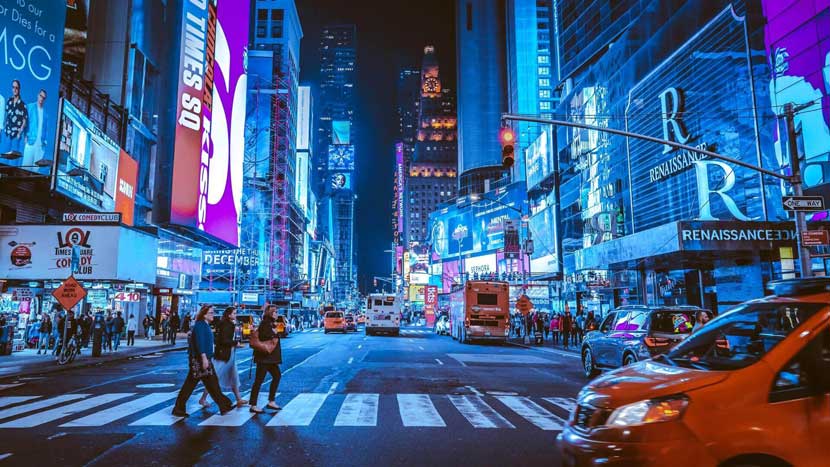Delhi’s Partition Museum is a monument of memories
The museum aims to take visitors on a tour of everything that unfolded during that historic event.

By Ankur Biplav
Did you know there once existed a joint Indo-Pak passport that allowed migrants to visit their ancestral homes and relatives on either side of the newly-drawn borders in 1947? The newly-inaugurated Partition Museum in Delhi displays an original copy of this passport, issued to one Hanwant Singh Hora on August 13, 1955. It’s another matter that after the Indo-Pak war of 1965, the joint Indo-Pak passport was abandoned.
Of the several other interesting attractions that the museum houses is an old electricity meter handed over to one Priyanka Mehta as a memento by her grandmother when she visited her across the border after Partition. Then, there’s also a refugee card of one Tirath Ram Datta that he received in a refugee camp, which has been donated to the museum by his son Yash Vir Datta. Yash was 10 years old when he came to Delhi after Partition.
Also read: A look at World’s oldest museums
While the Partition of India is mostly seen as an event which was aimed to divide the subcontinent into two separate nations, it has continued to cast a long and haunting shadow over the region and its people. The museum aims to take visitors on a tour of everything that unfolded during that historic event.
Kishwar Desai, chair of The Arts and Cultural Heritage Trust (TAACHT) and the brains behind the museum, believes that even in 75 years of India’s independence, the story of Partition was not well documented. “It was not there for the younger generations to see what really happened during that time,” says Ashwini Pal Bahadur, director of TAACHT.
The museum, which is the second partition museum to open in the country after the first was opened in Amritsar, Punjab, seven years ago, is situated in the Dara Shukoh Library building within the Ambedkar University campus in Kashmere Gate. The complex was originally built by Emperor Shah Jahan as a gift to his eldest son, Dara Shukoh, in 1637. The project is being managed by TAACHT.
The Partition Museum in Delhi has been divided into six galleries that take the visitors back to the days of the national movement leading up to Independence, followed by the Partition and its aftermath. Each gallery—named Towards Independence and Partition, Migration, Refuge, Rebuilding Home, Rebuilding Relationships and Hope and Courage—has elaborate photographs, historical newspaper clippings and documents along with audio-visual testimonies. The museum also houses several objects like ration cards, utensils, bank cheque books, old letters, etc, which have been donated by families.
Apart from talking about the Partition, a section of the building is dedicated to the legacy of Dara Shukoh. “Originally, the building was given to a Mughal prince, son of Shah Jahan, Dara Shukoh, and was then given to a Portuguese lady. Then, finally, it was passed to the Britishers,” explains Bahadur, adding that the works to restore this building started in 2019 but the process got delayed due to the coronavirus (Covid-19) pandemic.
When asked how this museum was different from the one in Amritsar, Bahadur says it focuses on the people of the city and the colonies which came up after Partition. It also has an auditorium named after Dara Shukoh, which would be used as a cultural hub, he adds.
The museum also has a separate section dedicated to the people from Sindh. According to Bahadur, unlike other communities, Sindhis were never allocated any geographical location. The section takes the visitors on the problems and hardships faced by the community just after Partition. “The museum explores right from 1900 to India’s Partition and beyond,” says Bahadur, adding that the museum also has a section which deals with the contemporary art assessment of the Partition, done by artist Veer Munshi. There are also photographs taken by Shareena Chopra, which depict Partition witnesses in old Delhi.
Also read: Travel to Mandu: A lot of history in a little geography
The Partition Museum has a section where visitors can get an insight into how the British citizens look at Partition. “This was done in collaboration with the School of Art and Oriental Studies (SOAS), London, where British people got interviewed on their thoughts, experiences and views on Partition,” Bahadur emphasises.
Talking further about Partition, Desai says, “One of the biggest tragedies of Partition was that we lost a lot of women. Even today, we don’t know where they are and their families have also lost track.” There’s a separate section in the museum which talks about how women dealt with the Partition. “This is a people’s museum. It does not talk about politicians. Common people were living in a harmonious way. When they were forced to leave, they were not prepared. They were not able to run with all their belongings,” she adds.
Talking about her father Padma Rosha, Desai narrates an interesting incident. Her father was a police officer in Amritsar and one day, in the early 1950s, late singer Lata Mangeshkar approached him and told him about her desire to meet singer Noor Jehan from the other side of the border. “So, my father got Noor to come from one side and Lata from the other and they met at the border. They had a picnic and sang songs during their meeting,” Desai says, adding that it was possible because her father had friends from Pakistan who helped in the meeting. This incident is also part of the oral history in the museum.
“It was a soft border. It was how people maintained their relationships,” Desai adds.
















